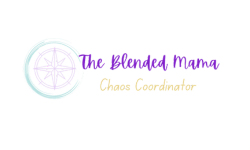The Power of Color Coding in Your Planner
Hey there, Chaos Coordinators! 🎉
Today, we’re diving deep into one of my favorite planner hacks: color coding. The power of color coding in your planner is a game-changer for staying organized and focused. By assigning specific colors to different tasks and events, you can instantly see what’s on your plate and prioritize effectively. Whether you’re managing work projects, personal commitments, or both, color coding simplifies your planning process and adds a visual element that boosts productivity and motivation. In this post, I’ll share how you can harness the power of color coding to make your planner more efficient and enjoyable.
Why Color Code?
1. Instant Clarity Imagine flipping open your planner and instantly knowing what’s on your agenda. With color coding, you can do just that. Different colors help you quickly distinguish between types of tasks and events, making it easier to manage your day. No more sifting through pages of black ink to find that important meeting or workout session!
2. Prioritization Assigning colors based on priority can revolutionize your task management. For example, use red for high-priority tasks that need immediate attention, yellow for medium-priority items, and green for lower-priority activities. This visual cue helps you focus on what truly matters and ensures nothing critical slips through the cracks.
3. Categorization Color coding is perfect for categorizing different aspects of your life. Use specific colors for work, personal, family, and health-related activities. This keeps everything neatly organized and allows you to track your time and efforts across various domains. It’s like having a color-coded map of your life!
4. Motivation Let’s be real: a colorful planner is just more fun to look at! Incorporating colors can turn planning into a creative and enjoyable activity rather than a mundane chore. Plus, a visually appealing planner can boost your motivation to stay organized and productive.
5. Efficiency Save precious time by knowing exactly where to look for specific information. When your planner is color-coded, it acts as a visual index. Whether you need to find a work deadline or a personal appointment, your eyes will quickly be drawn to the right spot.
How to Get Started with Color Coding
1. Choose Your Colors Start by selecting a palette of colors that you love and that stand out to you. Make sure the colors are easily distinguishable from each other to avoid confusion. You can use highlighters, pens, or even stickers for this purpose.
2. Create a Key A key is essential for remembering which color represents which category. You can create a small legend on a sticky note and place it in the front of your planner or on a bookmark for easy reference.
3. Be Consistent Consistency is crucial for making color coding effective. Stick with your chosen colors and apply them uniformly throughout your planner. Over time, the colors will become second nature to you, and you’ll navigate your planner with ease.
Example Color Coding System
Here’s an example of a color-coding system you might use:
Tips for Success
- Start Small: If you’re new to color coding, start with just a few categories and colors. You can always expand your system as you become more comfortable with it. You can start with color coding dots as an easy way to categorize items in your planner.
- Use Quality Supplies: Invest in good-quality pens, markers, or highlighters that won’t bleed through your planner pages. You can find some of my absolute favorite pens and markers in my Amazon Storefront. (As an Amazon Associate, I earn from qualifying purchases.
- Review Regularly: Periodically review your color-coding system to ensure it still meets your needs. Adjust as necessary to keep it effective and relevant.
Let’s see color coding in action!
Final Thoughts
Color coding is more than just a fun way to decorate your planner; it’s a powerful tool for enhancing your productivity and organization. Give it a try and watch how your planner transforms into a rainbow of efficiency and clarity.
Do you have any other color coding tips or experiences? Share them in the comments below—I’d love to hear from you!
Happy Planning! 🎨📅
